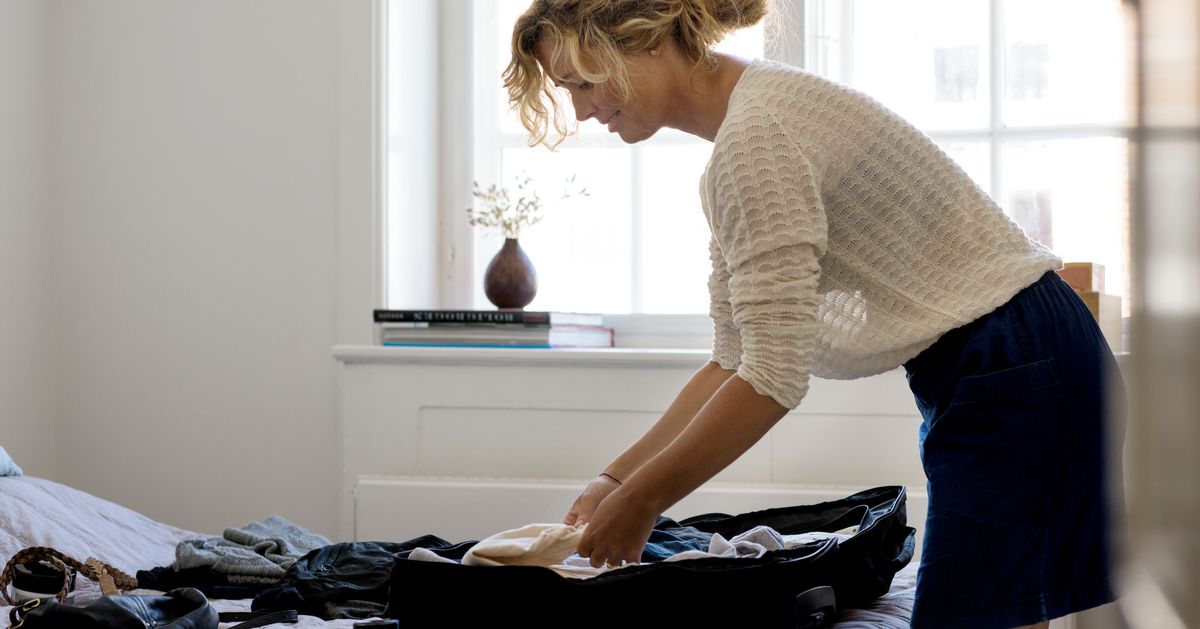Compression cubes. Dopp kits. Garment bags. There are lots of great products on the market to help keep your suitcase organized when you travel.
But one crucial type of item aids with organization and perhaps more importantly, hygiene. We’re talking about shoe bags.
While some people feel comfortable simply throwing their shoes in with their clothing and other luggage items, the more germ-conscious among us might think twice. After all, do you really want the dirty bottoms of your sneakers or work shoes coming into contact with your clean clothes?
Why are shoe bags important?
“I think it is a good idea to put your shoes in something like a plastic bag from the grocery store or one of those reusable zipper bags you can buy before putting them in your suitcase,” said Philip M. Tierno, a professor of microbiology and pathology at New York University’s Grossman School of Medicine.
He noted that the level of “germiness” in a pair of shoes depends on multiple factors, like the design of the shoes, the place where you walk in them and how often they’re washed.
“If the bottom of the shoe has ridges or there’s ribbing on the side or other areas that can collect material, then think about what they’re picking up,” Tierno explained. “Depending on the city where you’re living, you’re likely walking on sidewalks and streets where people cough, spit and vomit. There’s urine, human and animal feces and a whole host of other things that are relatively germy.”
Studies have shown that a single pair of shoes can contain millions of bacterial organisms, including E. coli and other disease-causing types. And in addition to the soles of your footwear, the inside area can also carry germs.
“Some sweat more than others, and they carry staphylococcus aureus, which can be spread from the inside of the shoe, in addition to whatever you might find on the bottom,” Tierno noted. “The sweat also imparts odor, which can spread around the suitcase.”
What’s the level of risk involved with not putting your shoes in a bag?
“People do the strangest things in public, and walking on the street, you can pick up all sorts of things that may be contaminated. But it’s still a relatively low risk of causing infection,” Tierno said.
He emphasized that for most people, our immune responses and barriers like the skin tend to protect us from infection, even when we’re exposed to germs spread from our shoes.
“You’d have to have it break through the skin for there to be an intrusion of many of the germs,” Tierno added. “And even if you get microorganisms on you, you’d have to pick up a lot of cells in sufficient number to cause an infection. You could step upon organisms that are dangerous, but in general, I characterize it as low risk.”
Even if your risk of getting sick is low, you probably aren’t keen on the idea of mingling your clothes with your germy shoes in all their microscopic spit-, urine-, vomit- and fecal matter-covered glory. Sometimes, family members co-pack the same suitcases when they’re traveling together or share the same luggage that they’ll alternate using for separate trips.
And while your suitcase might have a separate outer compartment where you can put shoes, odds are you need to utilize the inside of the bag as well. That’s where shoe bags come in. From washable packing cubes to colorful drawstring sacks, there’s no shortage of options to contain your footwear.
This story was previously published on an earlier date.
